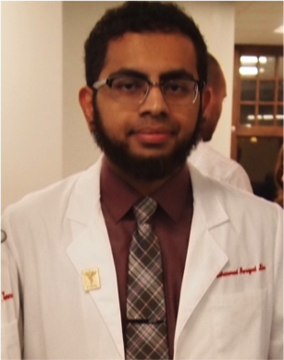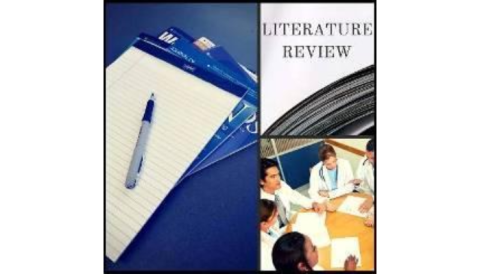Review: Effectiveness of Compression Stocking Treatment on Venous Leg Ulcer Recurrence
March 16, 2017
Temple University School of Podiatric Medicine Journal Review Club
Editor's note: This post is part of the Temple University School of Podiatric Medicine (TUSPM) journal review club blog series. In each blog post, a TUSPM student will review a journal article relevant to wound management and related topics and provide their evaluation of the clinical research therein.
Article title: The clinical effectiveness of two compression stocking treatments on venous leg ulcer recurrence: a randomized controlled trial.
Authors: Suzanne Kapp, MNSci; Charne Miller, BA(Hons); Lisa Donohue, PhD.
Journal name and issue: The International Journal of Lower Extremity Wounds, September 16, 2013.
Reviewed by: Mohammad Junayed Khan, Class of 2018, Temple University School of Podiatric Medicine
Introduction:
Venous leg ulcers (VLUs) affect 3% of all people aged 65 years and older. After healing, the recurrence rate can be as high as 69%, making the treatment of VLUs costly to the healthcare system. In Australia alone, VLUs cost the healthcare system $400-500 million per year. VLUs are problematic for patients beyond the physical ulceration of their feet because they create social and psychological challenges. Therefore, treating a VLU entails not only closing the ulcer with full epithelialization, but also taking the correct measures to prevent its recurrence.
Several studies suggest that medical grade compression stockings are an ideal treatment to prevent VLU recurrence. In this study by Kapp et. al, two kinds of compression stocking were investigated: a moderate-compression stocking that offered 23-32 mmHg of compression at the ankle, and a high-compression stocking that offered 34-46 mmHg of compression at the ankle. The authors investigated and compared the two below-knee length compression stockings at the level of the ankle and assessed their clinical efficacy in preventing VLU recurrence.
Materials and Methods:
The trial consisted of 93 participants who were monitored for 26 weeks in a nursing home service in Victoria, Australia. Overall, 73.1% of the subjects were female, and the average age of participants was 78.7 years old. The 93 participants were divided into 2 treatment groups: a group of 53 that received the moderate-compression stockings, and a group of 47 that received the high-compression stockings. Any patient who did not adhere to compression stockings for at least 50% of the study duration was classified as non-adhering, while those who adhered for 50% of the study or more were classified as adhering. Each group had comparable baseline characteristics, and both groups were blinded to all variables. Both the nursing staff applying the stockings and the participants were unaware of the brand of stocking or level of compression delivered with each stocking treatment. All participants initially wore a 4-layer bandage for 2 weeks after the initial ulcer was healed.
VLUs that developed during the 26-week monitoring period were classified into 3 categories: a “study wound” recurrence, an “other-ulcer” recurrence, or a “new ulcer” recurrence. A “study wound” recurrence is an ulcer recurring at the same anatomic site as the study ulcer, or the specific ulcer that has previously healed and is being monitored in the study. “Other-ulcer” recurrence is an ulcer recurring at a site that previously had an ulcer, at an anatomic site different from the study wound ulcer. “New ulcers” are ulcers that form in anatomic sites that were previously ulcer-free. The primary outcome of this study was to measure the time it took for the study ulcer to recur. Secondary outcomes included the number of study wounds recurring, adherence to the compression stockings, and the number of other-wound recurrence and occurrence.
Results:
The results indicate that 11 of the 93 participants experienced recurrence of the study wound, with most recurring by 13 weeks, and an average time to recurrence of 77.91 days. There was no significant difference between the moderate and high compression treatment groups and the percentage of study wounds recurring. There was also no significant difference between the two treatment groups and the incidence of new ulcers forming in anatomic areas that were previously ulcer free. Other-ulcers in previously ulcerated locations outside of the study wound had a 6.1% recurrence rate in the moderate-compression group, and a 2.3% recurrence rate in the high-compression group. However, a definitive relationship between compression stocking pressure and other-ulcer recurrence cannot be made because of the small sample size.
The results for adherence rates show that 91.4% of participants wore the 4-layer bandaging for 2 weeks post-healing, with no significant difference between treatment groups. However, an overall 55.9% of all participants did not adhere to the moderate and high-pressure stockings. The moderate-compression group had a non-adherence rate of 28.6%, and the high-compression group had a significantly higher rate of 61.4% non-adherence. The percentage of study time the two groups adhered to was also significantly different, with the moderate-compression adhering to 65.8% of total treatment, versus 43.7% for high-compression treatment. Estimated hazard ratios suggest that not adhering to either a moderate or high-pressure stocking results in a VLU recurrence that is 9 times more likely, compared to adherence. The hazard ratio also suggests that VLU recurrence is 3 times more likely in a person adhering to a moderate-compression stocking than a person adhering to a high-compression stocking.
Discussion:
The results of the study do not provide conclusive evidence as to whether a moderate or high-pressure compression stocking is more effective in preventing recurrence of venous leg ulcers. The short follow-up period of 26 weeks was a limitation of the study; a longer monitoring period could have identified more ulcer recurrences, and potentially could have resulted in more conclusive findings. The study does, however, exhibit that poor adherence to compression stockings is associated with high recurrence rates of VLUs.
The high-pressure compression stockings had significantly lower adherence rates, while the 4-layer bandage for 2 weeks during the post-healing period had very high adherence rates. This result, along with the finding that high-pressure compression stockings were well-accepted while wounded, indicate that patients can tolerate the high pressures when they are most motivated to becoming healed, and when they know their treatment is only short-term.
When patients know they must wear a moderate or high-pressure stocking long-term, their willingness to adhere to the stockings greatly decreases, as seen with the largest non-adherence to the high-pressure stockings. Ultimately, the only predictor of study wound recurrence in this study was found to be adherence. Hence, physicians must recognize and correct the potential causes of discomfort leading to non-adherence among their patients, such as itching, swelling, rash, tightness, skin irritation, and superficial skin breakdown. Adherence rates may increase by providing patients with the highest possible pressure stocking that each individual patient can tolerate, as opposed to blanketing all patients with a similar range of pressure stockings that may be intolerable to some but insufficient for others.
About The Author
Mohammad Junayed Khan is a third-year student at Temple University School of Podiatric Medicine (TUSPM). Junayed graduated from Temple University in 2014 with a Bachelor of Arts in Biological Anthropology. He has interests in all aspects of podiatric foot care, including wound management and therapeutic intervention.
Dr. James McGuire is the director of the Leonard S. Abrams Center for Advanced Wound Healing and an associate professor of the Department of Podiatric Medicine and Orthopedics at the Temple University School of Podiatric Medicine in Philadelphia.
The views and opinions expressed in this content are solely those of the contributor, and do not represent the views of WoundSource, HMP Global, its affiliates, or subsidiary companies.








